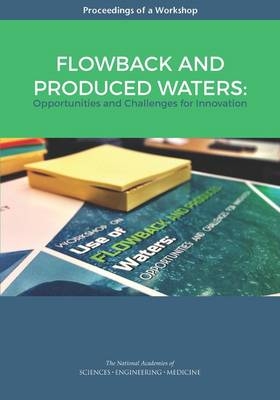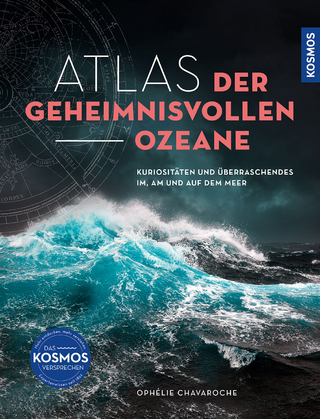
Flowback and Produced Waters
Opportunities and Challenges for Innovation: Proceedings of a Workshop
Seiten
2017
National Academies Press (Verlag)
978-0-309-45262-5 (ISBN)
National Academies Press (Verlag)
978-0-309-45262-5 (ISBN)
Produced water?water from underground formations that is brought to the surface during oil and gas production?is the greatest volume byproduct associated with oil and gas production. It is managed by some combination of underground injection, treatment and subsequent use, treatment and discharge, or evaporation, subject to compliance with state and federal regulations. Management of these waters is challenging not only for industry and regulators, but also for landowners and the public because of differences in the quality and quantity of produced water, varying infrastructure needs, costs, and environmental considerations associated with produced water disposal, storage, and transport.
Unconventional oil and gas development involves technologies that combine horizontal drilling with the practice of hydraulic fracturing. Hydraulic fracturing is a controlled, high-pressure injection of fluid and proppant into a well to generate fractures in the rock formation containing the oil or gas. After the hydraulic fracture procedure is completed, the injected fluid is allowed to flow back into the well, leaving the proppant in the newly created fractures. As a result, a portion of the injected water returns to the surface and this water is called "flowback water" which initially may mix with the naturally occurring produced water from the formation. The chemistry and volume of water returning to the surface from unconventional oil and gas operations thus changes during the lifetime of the well due to the amount of fluid used in the initial stage of well development, the amount of water naturally occurring in the geologic formation, the original water and rock chemistry, the type of hydrocarbon being produced, and the way in which production is conducted. The volume and composition of flowback and produced waters vary with geography, time, and site-specific factors.
A workshop was conducted by the National Academies of Sciences, Engineering, and Medicine to highlight the challenges and opportunities associated in managing produced water from unconventional hydrocarbon development, and particularly in the area of potential beneficial uses for these waters. This publication summarizes the presentations and discussions from the workshop.
Table of Contents
Front Matter
1 Introduction
2 Setting the Stage: Keynote Session
3 Regional Similarities and Differences: Environmental and
Regulatory Context for Potential Use of Flowback and Produced Water
4 Technologies for Managing Flowback and Produced Waters for
Potential Use
5 Characterization of Flowback and Produced Waters for Potential
Use
6 Research and Technology Innovation in Context
7 Facilitated Discussion
References
Appendix A: Workshop Agenda
Appendix B: Members of the Roundtable on Unconventional Hydrocarbon
Development
Appendix C: Biographies of Workshop Planning Committee
Appendix D: Biographies of Workshop Moderators and Presenters
Appendix E: Workshop Participants
Appendix F: Glossary
Unconventional oil and gas development involves technologies that combine horizontal drilling with the practice of hydraulic fracturing. Hydraulic fracturing is a controlled, high-pressure injection of fluid and proppant into a well to generate fractures in the rock formation containing the oil or gas. After the hydraulic fracture procedure is completed, the injected fluid is allowed to flow back into the well, leaving the proppant in the newly created fractures. As a result, a portion of the injected water returns to the surface and this water is called "flowback water" which initially may mix with the naturally occurring produced water from the formation. The chemistry and volume of water returning to the surface from unconventional oil and gas operations thus changes during the lifetime of the well due to the amount of fluid used in the initial stage of well development, the amount of water naturally occurring in the geologic formation, the original water and rock chemistry, the type of hydrocarbon being produced, and the way in which production is conducted. The volume and composition of flowback and produced waters vary with geography, time, and site-specific factors.
A workshop was conducted by the National Academies of Sciences, Engineering, and Medicine to highlight the challenges and opportunities associated in managing produced water from unconventional hydrocarbon development, and particularly in the area of potential beneficial uses for these waters. This publication summarizes the presentations and discussions from the workshop.
Table of Contents
Front Matter
1 Introduction
2 Setting the Stage: Keynote Session
3 Regional Similarities and Differences: Environmental and
Regulatory Context for Potential Use of Flowback and Produced Water
4 Technologies for Managing Flowback and Produced Waters for
Potential Use
5 Characterization of Flowback and Produced Waters for Potential
Use
6 Research and Technology Innovation in Context
7 Facilitated Discussion
References
Appendix A: Workshop Agenda
Appendix B: Members of the Roundtable on Unconventional Hydrocarbon
Development
Appendix C: Biographies of Workshop Planning Committee
Appendix D: Biographies of Workshop Moderators and Presenters
Appendix E: Workshop Participants
Appendix F: Glossary
1 Front Matter; 2 1 Introduction; 3 2 Setting the Stage: Keynote Session; 4 3 Regional Similarities and Differences: Environmental and Regulatory Context for Potential Use of Flowback and Produced Water; 5 4 Technologies for Managing Flowback and Produced Waters for Potential Use; 6 5 Characterization of Flowback and Produced Waters for Potential Use; 7 6 Research and Technology Innovation in Context; 8 7 Facilitated Discussion; 9 References; 10 Appendix A: Workshop Agenda; 11 Appendix B: Members of the Roundtable on Unconventional Hydrocarbon Development; 12 Appendix C: Biographies of Workshop Planning Committee; 13 Appendix D: Biographies of Workshop Moderators and Presenters; 14 Appendix E: Workshop Participants; 15 Appendix F: Glossary
| Erscheinungsdatum | 26.03.2017 |
|---|---|
| Verlagsort | Washington |
| Sprache | englisch |
| Maße | 178 x 254 mm |
| Themenwelt | Naturwissenschaften ► Geowissenschaften ► Hydrologie / Ozeanografie |
| ISBN-10 | 0-309-45262-7 / 0309452627 |
| ISBN-13 | 978-0-309-45262-5 / 9780309452625 |
| Zustand | Neuware |
| Haben Sie eine Frage zum Produkt? |
Mehr entdecken
aus dem Bereich
aus dem Bereich
die große Bild-Enzyklopädie mit mehr als 2000 Fotografien und …
Buch | Hardcover (2023)
Dorling Kindersley (Verlag)
59,95 €
Kuriositäten und Überraschendes im, am und auf dem Meer
Buch | Hardcover (2023)
Kosmos (Verlag)
38,00 €


